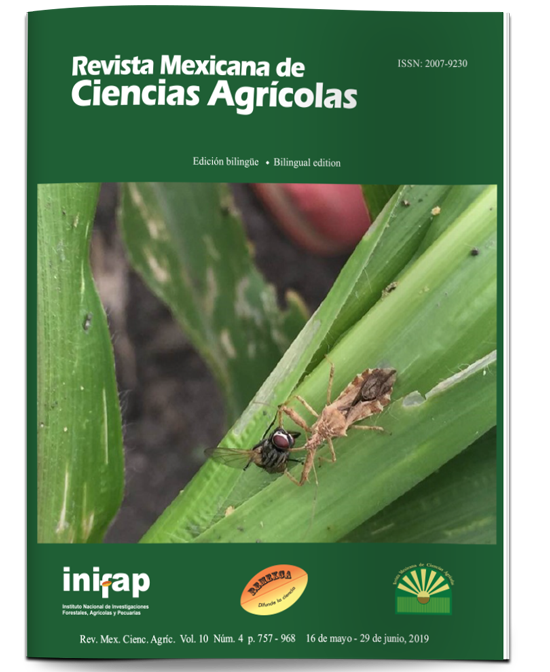Production potential of Vanilla planifolia Jacks in Totonacapan, Mexico, using geographic techniques
DOI:
https://doi.org/10.29312/remexca.v10i4.1661Keywords:
maxent, maximum entropy, multicriteria evaluation, potential distributionAbstract
The Totonacapan region, between the northern limits of Puebla and Veracruz, produces 80% of the vanilla in Mexico, and is considered the center of origin of the species Vanilla planifolia Jacks. However, the area sown has decreased, which affects the competitiveness of the sector. In the present work a socio-economic characterization of the producers of Vanilla planifolia Jacks was carried out during 2017 and 2018 and the productive potential for the cultivation in the Totonacapan region was determined through the use of geographic information systems (GIS) based on factors edaphoclimatic and physiographic. Results show that production is a secondary economic activity, among producers over 55 years of age and in a smallholder situation. The highest productive potential is located northwest of the Totonacapan region and is conditioned by the increase in rainfall in the driest month (April: <60 mm year-1) and temperatures no higher than 30 °C in the warmest quarter (June-July-August). These areas are mostly destined to livestock and agriculture of more profitable cyclical crops, so in the expansion of the crop should consider the socioeconomic aspects of producers.
Downloads
Downloads
Published
How to Cite
Issue
Section
License
The authors who publish in Revista Mexicana de Ciencias Agrícolas accept the following conditions:
In accordance with copyright laws, Revista Mexicana de Ciencias Agrícolas recognizes and respects the authors’ moral right and ownership of property rights which will be transferred to the journal for dissemination in open access. Invariably, all the authors have to sign a letter of transfer of property rights and of originality of the article to Instituto Nacional de Investigaciones Forestales, Agrícolas y Pecuarias (INIFAP) [National Institute of Forestry, Agricultural and Livestock Research]. The author(s) must pay a fee for the reception of articles before proceeding to editorial review.
All the texts published by Revista Mexicana de Ciencias Agrícolas —with no exception— are distributed under a Creative Commons License Attribution-NonCommercial 4.0 International (CC BY-NC 4.0), which allows third parties to use the publication as long as the work’s authorship and its first publication in this journal are mentioned.
The author(s) can enter into independent and additional contractual agreements for the nonexclusive distribution of the version of the article published in Revista Mexicana de Ciencias Agrícolas (for example include it into an institutional repository or publish it in a book) as long as it is clearly and explicitly indicated that the work was published for the first time in Revista Mexicana de Ciencias Agrícolas.
For all the above, the authors shall send the Letter-transfer of Property Rights for the first publication duly filled in and signed by the author(s). This form must be sent as a PDF file to: revista_atm@yahoo.com.mx; cienciasagricola@inifap.gob.mx; remexca2017@gmail.
This work is licensed under a Creative Commons Attribution-Noncommercial 4.0 International license.



